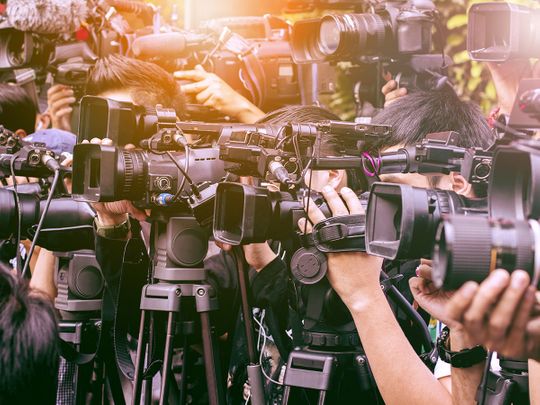
It has been a tough time for the Indian media. In the age of social media and disinformation, the news media’s credibility has been declining. Media economics has been going awry for many reasons, including the monopoly of tech platforms over online advertising and the slowdown in the Indian economy.
As if this was not enough, came Covid and lockdown, almost freezing economic activity for a while. Newspapers took a hit like never before. Many journalists have lost their jobs while some have seen big pay-cuts.
The Indian media does not get credit for doing a stellar job in times this tough. The pandemic, the lockdown, the migrant labour crisis caused by the lockdown, the Delhi riots in February, protests over various issues, elections in Bihar, and even a sensitive border dispute with China — the Indian media did a stellar job covering and reporting it all, fearlessly. This was often at great personal cost, such as getting Covid. There have been unsung heroes among the tribe of reporters and photographers who have lost lives to Covid this year.
Yet there is one story the Indian media forgot to cover: the recession. It’s been reported in the numbers, but not in its human form. The cars not selling, the houses no longer being constructed, the shops and cafés which have shut down, the planes not flying, the trucks not moving — all of these have had a huge cost on our livelihoods, prosperity, dreams and stomachs.
With rare exceptions like the brilliant Sayantan Bera of Mint newspaper, you’ll find very little reporting this year of what it has been like for 1.3 billion people to lose jobs, incomes and hope. The best case estimation for the GDP in 2020-21 is -7.7%.
That’s a huge disaster for a developing country like India whose human cost has barely been reported. A recently released government report found that in 2015-19, child malnutrition, wasting and stunting have been increasing in many states, reversing hard won gains. This data is until 2019, before the pandemic. The stories should be on the front page.
India’s missed industrial revolution
Travelling in Bihar during the election a few months ago, I was struck by the number of people who’d tell me, ‘We don’t have money to eat.’ There has never been a time when Indians didn’t complain about lack of jobs and economic opportunities, because even high economic growth has not produced the mass jobs India’s missed industrial revolution should have. But the situation today is exceptional: people have lost even what they had.
The economic contraction is hurting almost everyone. It is a bigger story than Covid or the migrant labour crisis. This was the biggest story of 2020, and the Indian media hasn’t done justice to it
According to a study by Kaushik Krishnan et al, using data from surveys by the Centre for the Monitoring of Indian Economy, the average income of Indians declined by 25%, year on year, between June 2019 and June 2020. Imagine raising two children on a salary of 20,000 rupees a month, less than $300. And then suddenly losing 25% of it.
The taxi driver I hired in Bihar during the elections, said I was his first client since the lockdown in March. I have met people who’ve been unable to pay their children’s school fees, found the child kicked out of the Whatsapp group that passed off as online class.
Covid in India has been bad — so far 1,44,000 people have died on record. That’s 104 deaths per million, 98th highest in the world. But the economic contraction is hurting almost everyone. It is a bigger story than Covid or the migrant labour crisis. This was the biggest story of 2020, and the Indian media hasn’t done justice to it.
In 1890, Jacob Riis published a book of photographs, called “How the Other Half Lives: Studies among the Tenements of New York” documenting the life of poverty in New York’s slums. The book shook up New York’s elite and is remembered to this day.
No conspiracy or malice
The business press only goes on and on about recovery, without acknowledging that this recovery is far too slow, and will take a while to take us to pre-2020 levels, which weren’t doing great either. India is not alone in this, but we have had one of the worst contractions and among the lowest stimulus relief packages. The ever-rising stock markets don’t fill anyone’s stomachs.
There is no conspiracy or malice in the Indian media’s inability to highlight this story. The media has been distracted with non-stories that get TRPs, such as the suicide of a Bollywood actor sold as murder for ratings. The media doesn’t like to cover too much bad news because the triumphalist India story sells much better. India is always on its way to becoming a superpower, even with -7.7% GDP growth.
We are desensitised to suffering and poverty in India. But we need to acknowledge that we are in something of a human emergency, with our economic condition having been affected drastically, at a time when economic growth had already been falling like mercury. We need to do this not for political point-scoring or to induce guilt among the well-heeled, but because human life and prosperity should be dear to us all.





